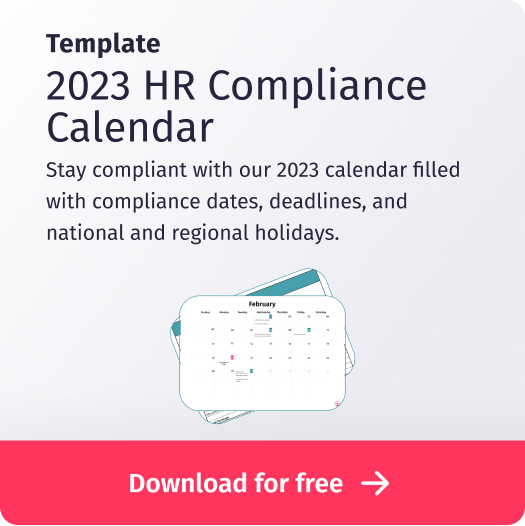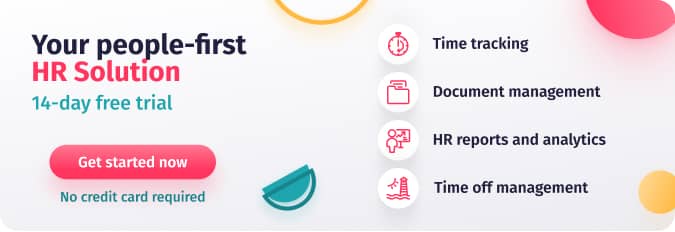Whether it be a 29-year-old well-qualified female being told that she is not “a good fit” for a higher-level managerial role or a 55-year-old candidate being told that he’s “overqualified for the position”, age discrimination in the workplace rears its ugly head in many ways and can cause problems for employees and companies alike.
Despite Federal laws that protect employees from biased treatment, 93% of respondents in a recent survey by AARP indicated that age discrimination in the workplace is a common experience for individuals over the age of 50. But, what is age discrimination from a legal standpoint, and how does it manifest in the workplace setting?
In this article, we’ll go through the ins and outs of age discrimination laws in the United States, signs to help you recognize age discrimination in your workplace, and provide examples of what age discrimination looks like. Lastly, we’ll provide some clear, actionable steps that you can take to make sure that your workplace is a safe haven from age discrimination and comfortable for every member of your team.
What is age discrimination?
According to the U.S. Equal Employment Opportunity Commission (EEOC), “Age discrimination involves treating an applicant or employee less favorably because of his or her age.” Age discrimination commonly takes place during the hiring process, while making decisions about career growth, and while and firing employees. Here are some examples of discriminatory behavior that infringes upon workers’ rights:
- Coded language in job postings
- Inappropriate age-related interview questions
- Disproportionate offer letters for certain age groups
- Salary and benefit gaps, or benefits that clearly favor one age group
- Biased evaluations and pay-for-performance models
- Promotions and demotions
- Age-based employee terminations
Additionally, there are circumstances in which day-to-day harassment and other discriminatory behavior is considered to be illegal. Particularly, if it occurs frequently, if it is severe enough to create a negative work environment, and if it leads to problems for individuals, such as disciplinary actions or termination.
Age discrimination laws to be aware of
The Age Discrimination in Employment Act of 1967 (ADEA) forbids age discrimination against employees and applicants who are 40+ years old. ADEA applies to organizations that comply with the following:
- Companies with 20 or more employees
- Labor unions with 25 or more members
- Federal, state, and local governmental organizations
- Employment agencies
However, like many laws, there are some exceptions that permit employers to recruit and employ individuals of a specific age group. In these cases, known as “Bona Fide Qualification Group” or “BFQG”, employers can justify age restrictions for certain positions, usually due to the physical demands or safety requirements necessary for the position. For example, it might be necessary for drivers and pilots to comply with age requirments due to the physical demands of the position.
While there are no federal laws that protect employees that are under 40 years old, there are certain state laws that prevent discrimination toward younger workers. For example, The New York City Human Rights Law (NYCHRL) protects workers from age discrimination, regardless of their age or the company’s size.
Signs of age discrimination
Now that we’ve gone over what is age discrimination and some of the legislation surrounding the issue, let’s take a look at some of the ways that you can detect age discrimination in the workplace.
Hiring only younger employees
Like many other forms of discrimination in the workplace, it’s no surprise that ageism is commonly found during the hiring process.
For example, In 2022, Indianapolis pharmaceutical company, Lily USA, LLC. was charged by the EEOC for failing to hire older sales representatives for open positions from 2017-2021. The company claimed that the majority of their employees were older, and they decided to search for “early-career candidates” in order to create a more balanced work environment.
However, under AEDA, it is illegal for employers to hire younger candidates based solely on their age. Although this is a practice that employers attempt to conceal, code words in job descriptions and preferential hiring are widespread.
Biased promotions
Unfortunately, not all promotions are made equal. And sometimes, employees find themselves stuck in the same position for years, and years, simply because of age-related prejudice. Unfair promotions will lead to frustration, workplace hostility, and bigger legal concerns.
In order to avoid these problems, make sure the determining factors for promoting staff are transparent and crystal clear. Then, conduct regular pay equity analyses to reduce the possibility of bias and unfair pay. The amount of time that employees have stayed with the company is a factor to consider, but it’s not the only one. To make the best possible promotion, take into account employees’ qualifications, experience, motivation, and overall vision for the future.
Microaggressions and Isolation
Sometimes, age discrimination can take root in day-to-day interactions amongst your staff and gradually erode your company culture.
To recognize problematic behaviors, take note of any signs of hostile interactions, such as isolation and discriminary comments. For example, targeting and excluding certain employees from conversations and meetings. Or perhaps there are “jokes” about an employee’s generational interests or behavior.
While employees might act and pretend to feel ok with some of the comments or actions, they might be creating insecurities and generating discomfort. Not exactly conducive to building a trusting, multigenerational working environment!
Eliminating age discrimination in the workplace
Want to take action to fight age discrimination in your workplace? Below, you’ll find some tips for human resources to help you with the process.
Develop clear policies
The first step towards eliminating age discrimination in the workplace is to put well-defined company policies and procedures in place. These policies should explicitly state your company’s zero-tolerance stance towards unfair, age-based treatment. Also, they should detail the repercussions and disciplinary actions for not complying with this policy.
It is essential to communicate this company policy with everyone. Additionally, incorporate it into your onboarding sessions with new employees. Make sure that everyone, including supervisors, team leaders, and HR personnel know how to report and take action in case someone infringes upon company policy.
DEI training
Eliminating age discrimination in the workplace isn’t just about writing policies, it’s about creating awareness about problems and changing mentalities. Both supervisors and employees should undergo training to make sure they adopt diversity and inclusion best practices.
This training should make employees aware of and give specific examples of unconscious bias in the workplace. There are many advantages of having a multi-generational team and training should emphasize this point. Additionally, the training should cover topics and examples of situations where bias and discrimination are commonly found. Not only should employees rethink their daily interactions with each other, they should learn to respect the qualities that their fellow team members bring to the table, regardless of age.
Reevaluate your hiring strategy
Now that we’ve covered training and company policies, it’s time to conduct an audit of your company’s hiring process. This will help detect any traces of discriminatory traces during the hiring process. Ask yourself:
- What channels do you use to advertise open positions? Certain channels are more likely to attract applicants from a certain age group. Make sure that everyone has the chance to see and apply for the position.
- What langage do you use in job descriptions? Scan through your job descriptions to make sure they are free of any age-specific expressions and language. In the same way gender code words implicitly suggest the company’s ideal candidate, language can also create unfair age expectations for job applicants. Encouraging “recent college graduates” to apply for the position will deter other qualified candidates from sending in their CVs.
- What does the application form look like? Do candidates need to put their birthdates anywhere? Removing this from application forms will put candidates more at ease and reduce bias during the hiring process.
- What questions do interviewers ask potential candidates? Under AEDA, it is illegal for employers to ask questions about an applicant’s age or to reference the applicant’s age, however, this happens all of the time. Make sure questions focus on evaluating the applicant’s professional background, knowledge, and value that they can bring to your team.
Assess your employer branding
In the larger scope, think about how your brand image communicates (or doesn’t communicate) with certain age groups. Look at the photos, images, and types of language that are associated with your brand. What kind of “message” are you communicating to current and potential employees? Does your company branding match your workplace inclusivity goals and policies? Evaluate how to make your branding and company more representative of all age groups.
How Factorial can help
If you are looking for a way to use data and employee feedback to remove bias, consider trying an all-in-one HR platform to help you tackle age discrimination in the workplace. With Factorial HR, you can create custom diversity DEI dashboards that help you guarantee equitable hiring practices. What’s more, you can keep track of performance scores, and create anonymous climate surveys to help you target and eradicate age discrimination from your office.



